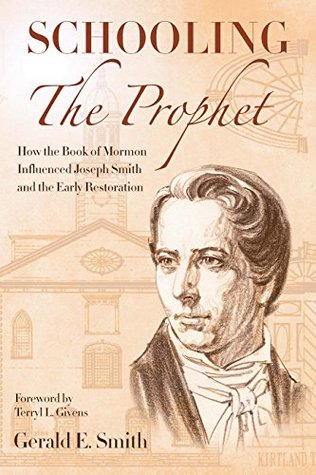Kindle Notes & Highlights
As Grant Hardy once noted wryly, if the Book of Mormon was only intended as an evidence that Joseph Smith could translate—a pamphlet would have sufficed. The almost 600 pages of the original edition, in actual fact, were a vast resource that Smith drew upon—consciously and unconsciously—as he unfolded the organization and teachings of the LDS Church.
Book of Mormon spoke of various major temples surrounded by numerous smaller temple altar sanctuaries dotting the land. Their temple worship was patterned after the altar worship of the ancient Israelite temple, their temple teachings quite openly centered in the creation and Eden narratives that Smith would have recognized in part from the Genesis accounts of the Old Testament.
Smith quietly looked to one of the most important sources of religious thought and sacred protocol that he knew: the Book of Mormon.
Approaching truth seekers with broadly accepted scripture like the Bible made perfect sense, but how would they respond to unknown scriptural texts—like the Book of Mormon? The new direction of the 1973 discussions made a statement, asserting unequivocally that the Book of Mormon merited its own recognition as scripture,
The problem with the derivative framing of the Book of Mormon is that it places Smith in the primary role of author and therefore deflects any reasonable notion that the book itself exerted a unique and independent influence on the Prophet himself and the development of the restoration.
Why not be more definitive? Perhaps he simply couldn’t. Even for a prophet working by inspiration, the process nonetheless may have been both complex and challenging, and at least difficult to articulate or to describe to others.
Another intriguing possibility is that Joseph Smith understood that the translation of the entire Book of Mormon record was not his translation
the Prophet looked back in reflection on the early years of the 1820s and defined this spiritual experience in terms of his personal worthiness before God—his sins, repentance, and remission of sin.8
there is a God in Heaven”—which appears twelve times word for word in the Book of Mormon and twice in the Old Testament.
God is “infinite and eternal” is a Book of Mormon phrase, not appearing elsewhere in biblical scripture.
Book of Mormon passage, contains essentially the entire 1830 Articles phrase “ascended into Heaven to sit down on the right hand of the Father”
The core phrase identifying the Godhead as “Father and Son and the Holy Ghost” is mentioned twelve times in the Book of Mormon and once in the New Testament.
Overall, nearly two-thirds of the phrases in this revealed statement of Mormon theology in the 1830 Articles and Covenants correspond to Book of Mormon phrases either exactly or closely.36
“While some 283 passages in the Book of Mormon text refer directly to [God’s body],
In other words, brethren, to make us see the beauty and perfection of the gospel theory as devised by God; faith is to destroy the love of sin, repentance to destroy the practice of it, baptism the state of it, remission the guilt of it, the Spirit the power of it, and the resurrection to destroy the punishment of sin; so that the last enemy, death, will be destroyed.53
this revelation states that true damnation was the fate of only a very few—the sons of perdition; they were “the only ones
The question was not escape from hell but closeness to God. God scaled the rewards to each person’s capacity.”
The rewards for faithfulnes & the punishments for sins, are so much beyond the narrow mindedness of men, that every honest man is constrained to exclaim; It came from God.


